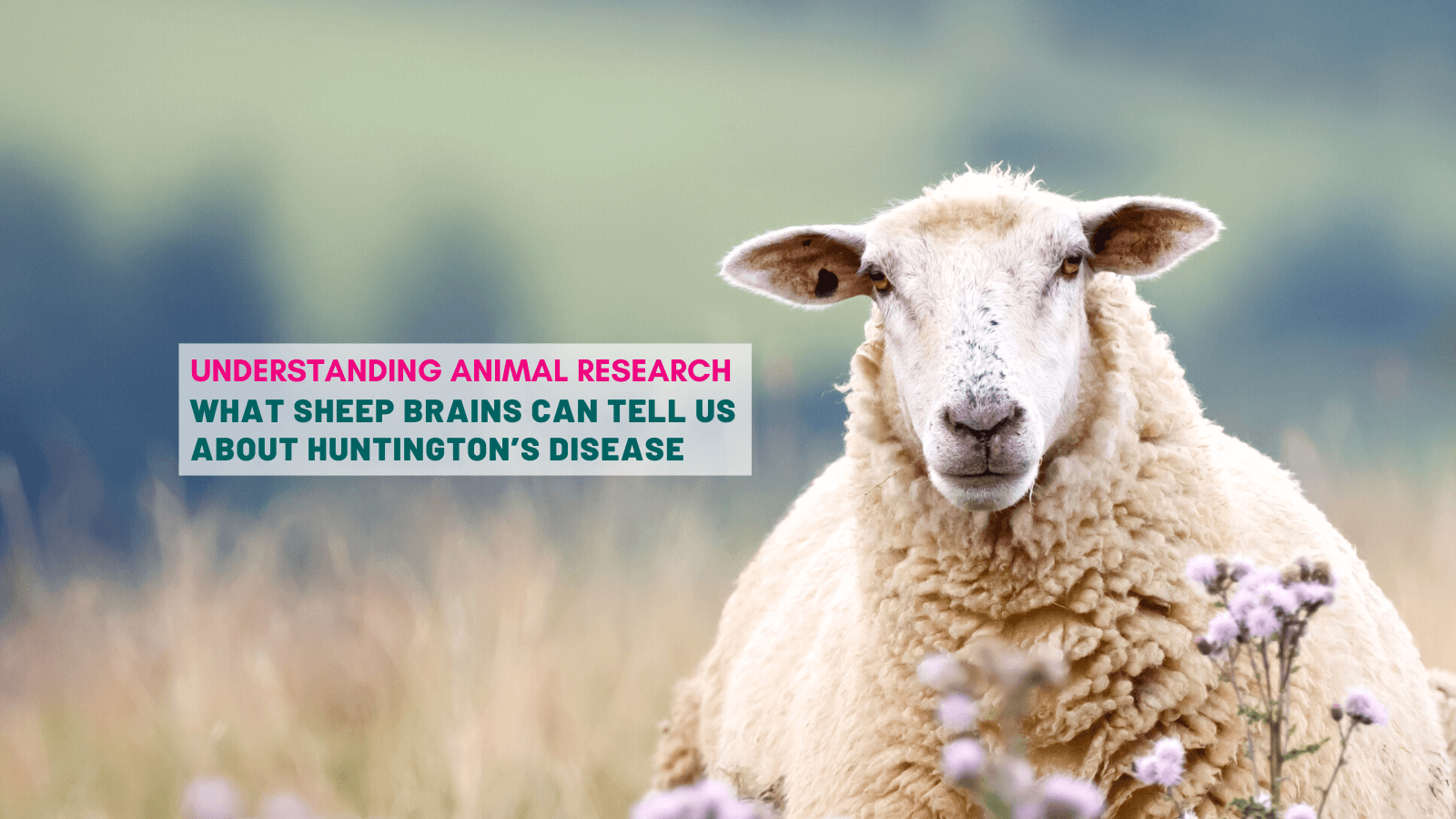Rodents, and particularly mice, have been the most widely used models in biomedical research for well over a century. They have brought about many crucial, fundamental discoveries that have led to new therapies, saving many lives. However, mice are not humans, and sometimes looking at other animal models that are closer to us in size or in behaviour can shed new light on some pathologies. This is particularly true when it comes to the brain.
Mouse models of the brain
The cortex is part of a very complex organ, one of the most intricate of the human body. It is three pounds of cells that are the seat of intelligence, movement, feeling, behaviour and most of the qualities that define our humanity. Mouse models of the brain can have limits when it comes to mirroring this complexity.
That is not to say that mouse models of adult-onset neurodegenerative diseases haven’t vastly enhanced the understanding of the molecular pathogenesis of Alzheimer’s disease, Parkinson’s disease, dementia, Huntington’s disease and ALS. Nevertheless, our understanding of these disorders and the development of therapeutics benefit from different animal models that more faithfully recapitulate human disease.
Brain disorders are, for the most part, late-onset. This means that progression is slow and they develop with time, sometimes over several decades. Mice only live for 2 years, and it is not possible to model fully the development of these ageing diseases. Mice also have very small brains. A typical mouse brain weighs about a gram, a thousand times smaller than that of a human. It becomes challenging to scale up from a mouse to a human equivalent, especially in terms of treatments that need to be delivered directly into the brain. Small volumes of drugs will spread very easily across the mouse brain, but the equivalent volumes in a human might never get to the parts they need to reach.
“It's not that there's something wrong with using mice. Mice are fabulous and make very useful models, ” Jenny Morton, Professor of Neurobiology at the University of Cambridge told UAR. “ They are very important models that help researchers understand a lot about the physiological processes and pathology of individual neurons or diseases. But there is some research for which you just can't use mice.”
She adds: “The part of the brain that does all the thinking is actually very different in a mouse and a human. If you're interested in cognition, thought processes and decision making, then mice aren’t always the model of choice. They don’t need to make decisions that are as complex as those humans make. As well, although it is possible to study interactions between individual mice, you can't easily study complex social interactions in mice, not least because they don't live in big groups naturally."
Using sheep as alternatives to mice to study the brain
Jenny Morton studies genetic neurological disorders, particularly Huntington’s disease, in transgenic mice and sheep. There is no natural animal model of Huntington’s disease. Sheep can get at least 18 different human genetic disorders, caused by mutations in the same genes that cause disease in humans, but Huntington’s disease is not one of them. Professor Morton chose to turn to the larger sheep model, because while the knockout and transgenic mouse models she used reflected symptoms of Huntington's patients they fell short when it came to testing cognitive functions.
“I tried for many years to test mice making complex so-called 'executive' decisions. We used an automated testing device that the mice could use easily, but while they could perform simple decision making using this apparatus, they could never learn to do very complex behaviours. And of course, humans make complex decisions all the time. Sheep, on the other hand are fully capable of executive decision making, we found.”
Although sheep are not usually thought to be very clever, Morton’s studies suggest that they are much more intelligent than they appear. Morton found that sheep can perform 'executive' cognitive tasks that are an important part of human and other primates’ behaviour. Sheep live long and intricate lifestyles, in social groups, and make decisions all the time: where to go, who to go with, how to stay safe. They have a more complex life and they live a long time, so they probably need to remember decisions that they've made in the past more than a small mammal does. They also have bigger brains, larger even than most monkeys.
“Sheep brains are much more human-like than those of mice. The structure of the cortex, for example, is much more like that of a human. Sheep cortex has convolutions, whereas a mouse has a very smooth cortex, which will affect how a treatment can spread in the brain. Clearly, sheep aren't humans and are never going to be, but they do have brains that are structurally similar and intermediate in size between a mouse and a human brain.”
An obvious choice could have been to use non-human primates because of their resemblance to humans. But for ethical, logistical and monetary reasons, using a large farm animal removed some of the confounds of experimenting with large animals, notably because sheep can be kept in the naturalistic conditions in which they would normally live. Sheep have great potential, not only for studying Huntington's disease, but also for studying cognitive function and the evolution of complex behaviours in normal animals.
Studying Huntington's disease in sheep
Fortunately, researchers had developed a transgenic sheep model for Huntington’s disease, engineered to carry the single dominant mutation that cause the disease. At five years old, these sheep show measurable metabolic changes, disruptions in their circadian behaviour and sleep, much like those seen in patients with Huntington’s disease. But they do not yet show the cognitive deficits seen in humans.
Morton comments : “Even at 7 years of age, the oldest sheep we have tested, these sheep are still pre-symptomatic. But sheep can easily live up to 10 or 12 years old and the cognitive decline is bound to develop further down the line. We have another five years window in which to study the onset of these very complex behaviour disorders. The good news for the model is that, even in these early stages, the sheep already show pathological brain changes that are consistent with what we see in humans.”
The researcher is particularly interested in these early stages of the disease. Her ultimate goal is to develop a treatment that would slow – or better still prevent - the whole disease process, starting with the onset of symptoms. Such a treatment would need to be started before the disease has really taken hold, making detection of the early symptoms that much more important.
“If you want to look at how a disease progresses or whether a treatment works, you need to find a way to measure it. Most of my work hasn’t actually been working on Huntington's disease in the sheep themselves, but rather I have been devising ways of measuring Huntington's disease-relevant changes in behaviour,“ explains the researcher.
Measuring changes in cognitive function can be difficult, especially in smaller animal models. You can’t ask an animal what they’re thinking. Instead, you have to devise ways of measuring it. Sleep is a symptom that is difficult to fully measure. When somebody's asleep, they just look asleep. But in fact, sleep is a very complex brain mechanism. In humans it is measured with an EEG, but for overnight recordings they usually need to stay in a sleep clinic for a couple of nights, and the analysis can be quite complicated and take a long time.
Morton concludes : “ Even in humans, cognitive function and sleep are quite challenging to measure. It is actually a bit easier to measure sleep in animals than humans because we can implant EEG electrodes and record directly from the brain using wireless technology. Recording this way is painless and stress-free, and can be done over long periods without having to handle the animal. We have also developed methods for measuring sheep cognition based on human tests. I've been looking into how to measure and detect in sheep these early changes of these challenging aspects of behaviour that are particularly important, not only for people with Huntington's disease but also people with other diseases, notably those affected with other degenerative disorders such as Alzheimer's patients."
This article was originally posted on www.understandinganimalresearch.org.uk
Read more on research into Huntington's disease in "Huntington’s disease: 30 years after the discovery of the gene".
Last edited: 5 July 2023 16:22




